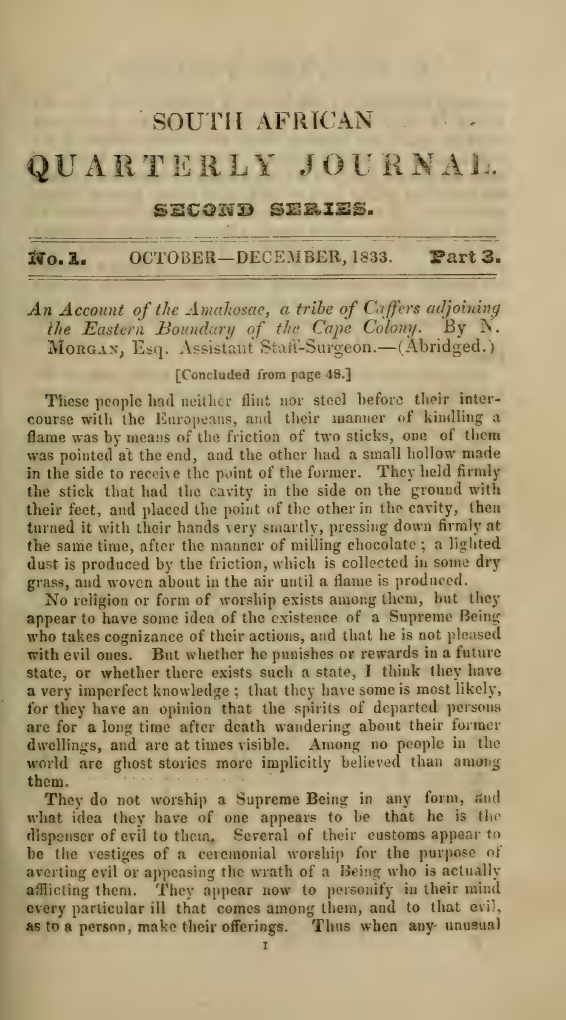An account of the Amakosae, a tribe of Caffers adjoining the Eastern Boundary of the Cape Colony
DOI:
https://doi.org/10.21504/saqj.21.2695Keywords:
Amakosae (Xhosa), amaXhosa, Cape Colony history, Cape Colony -- Fontier, Cape Colony -- population statistics, Colonial Expansion -- Dutch, Colonial Expansion -- British, amaXhosa -- Genealogies, Xhosa culture, 19th Century South Africa, 19th-century ethnography, Phonology, Caffrarian LanguageAbstract
This continuation of the ethnographic study (see https://doi.org/10.21504/saqj.21.2689 and https://doi.org/10.21504/saqj.21.2692) offers a detailed examination of the domestic and cultural life of the Amakosae (Xhosa).
The text details the Amakosae's method of kindling fire using the friction of two sticks before their interaction with Europeans. A significant portion is dedicated to their spiritual beliefs and customs. The author notes the absence of formal religion or worship, but observes an imperfect idea of a Supreme Being who takes cognisance of actions. Practices such as slaying and consuming cattle or throwing pieces of meat into rivers are interpreted as vestiges of ceremonial worship, either for averting evil from specific afflictions (mortality among cattle, dangerous river crossings) or, in the case of rituals at birth, circumcision, and marriage, as remnants of thank offerings to a Beneficent Deity. The author speculates that the Amakosae are descendants of people from the east who gradually lost their original knowledge and fell to their "present low estate" during their progressive migrations.
The account then transitions to a detailed linguistic analysis based on descriptions by Missionaries, presenting the Caffrarian (Xhosa) alphabet, including the vowels and consonants and their respective sounds. Particular attention is given to the unique and complex klicks (semidental, palatal, and lingual, denoted by C, Q, and X) and the hard guttural (R), as well as various compound consonant sounds (e.g., Dw, Dzh, Tsh, Khl). The rules for syllable division and word accent (penultimate accent, often shifting upon inflexion) are also described. This section offers valuable early documentation of the Xhosa language's phonology.
Downloads

